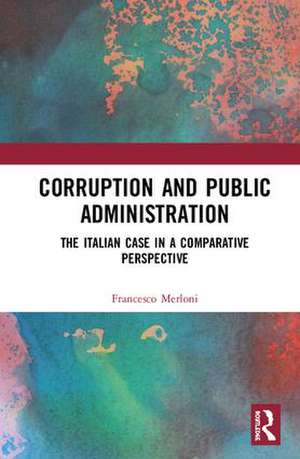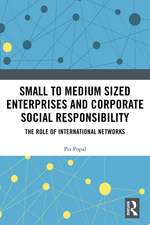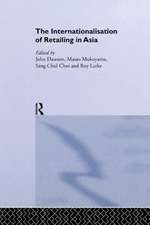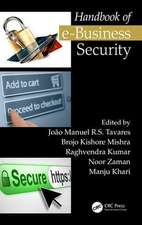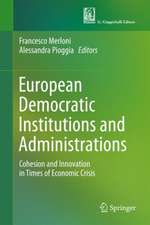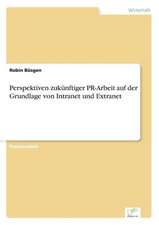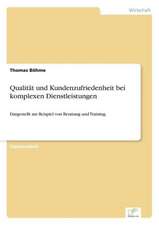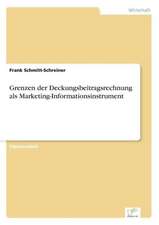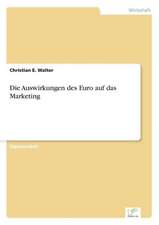Corruption and Public Administration: The Italian Case in a Comparative Perspective
Autor Francesco Merlonien Limba Engleză Hardback – 2 oct 2018
The book shines a light on anti-corruption practices and aims to foster open discussion about this pressing topical issue among peers in all relevant fields of the social sciences.
| Toate formatele și edițiile | Preț | Express |
|---|---|---|
| Paperback (1) | 385.25 lei 6-8 săpt. | |
| Taylor & Francis – 18 dec 2020 | 385.25 lei 6-8 săpt. | |
| Hardback (1) | 764.20 lei 6-8 săpt. | |
| Taylor & Francis – 2 oct 2018 | 764.20 lei 6-8 săpt. |
Preț: 764.20 lei
Preț vechi: 1027.40 lei
-26% Nou
Puncte Express: 1146
Preț estimativ în valută:
146.25€ • 150.88$ • 123.78£
146.25€ • 150.88$ • 123.78£
Carte tipărită la comandă
Livrare economică 04-18 martie
Preluare comenzi: 021 569.72.76
Specificații
ISBN-13: 9781138366725
ISBN-10: 1138366722
Pagini: 190
Ilustrații: 4 Line drawings, black and white; 21 Tables, black and white; 25 Illustrations, black and white
Dimensiuni: 156 x 234 x 16 mm
Greutate: 0.45 kg
Ediția:1
Editura: Taylor & Francis
Colecția Routledge
Locul publicării:Oxford, United Kingdom
ISBN-10: 1138366722
Pagini: 190
Ilustrații: 4 Line drawings, black and white; 21 Tables, black and white; 25 Illustrations, black and white
Dimensiuni: 156 x 234 x 16 mm
Greutate: 0.45 kg
Ediția:1
Editura: Taylor & Francis
Colecția Routledge
Locul publicării:Oxford, United Kingdom
Public țintă
PostgraduateCuprins
Introduction
Part I. The international landscape of anti-corruption efforts
Chapter 1 Varieties of approach and country cases
1.1 The nature of corruption
1.2 The set of countries under observation
1.3 Dimensions of the country analysis
1.4 Country case: France
1.5 Country case: Italy
1.6 Country case: the United Kingdom
1.7 Country case: the United States of America
1.8 Country case: Australia
1.5 Summary
Chapter 2 The mission and operations of the Italian experiment
2.1 Introduction
2.2 Timeline of Anti-corruption Authority key statutes and events
2.3 Towards a cycle of planning and feedback
2.4 Conclusions
Chapter 3 An inside-out view of Italy’s Anti-corruption Authority
3.1 Supervision activities
3.2 Regulatory activities
3.3 The Anti-corruption Authority’s organizational reality
3.4 Conclusion
Chapter 4 Country comparison of anti-corruption efforts
4.1 The institutional setup
4.2 The power and scope of the organization
4.3 Definition of corruption: public vs. private
4.4 Mission: prevention or repression of corruption
4.5 Operations: (micro-)reporting from the field or concentration on big issues
4.6 Focus of action: objective vs. subjective measures
4.7 Relationship with transparency
4.8 The anti-corruption plan as an instrument of engagement
4.9 Summary of Part 1
Part II. Broadening the view: adding contextual elements
Chapter 5 The social and economic context of the anti-corruption effort
5.1 Italy in the international arena
5.2 The social structure and regional differences
5.3 The structure of public administration
5.4 Public expenditure in detail
5.5 The Anti-corruption Authority’s framework
5.6 Conclusion
Chapter 6 Measuring the impact of the anti-corruption effort
6.1 Introduction
6.2 Foregone GDP
6.3 Analysis of legislation
6.4 Academic sources
6.5 Intermediate variables
6.6 Types of corruption
Chapter 7 Origin and support of the anti-corruption effort: the stakeholders
7.1 Formal publics
7.2 Informal publics
7.3 The overt critics: magistrates and politicians
Chapter 8 Corruption case histories
8.1 An anti-corruption "clinic"
8.2 A large municipality
8.3 An international event
8.4 The Ministry of Public Works
8.5 Conclusion
Chapter 9 Joining public and private anti-corruption efforts
9.1 The convergence of reporting instruments
9.2 The convergence of United Nations initiatives
9.3 Finding public–private synergies: a proposal
9.4 Beyond control: management by benchmarking
Chapter 10 Conclusions and future studies
Chapter 11 Interview with the Italian Anti-corruption Authority president, Raffaele Cantone
Part I. The international landscape of anti-corruption efforts
Chapter 1 Varieties of approach and country cases
1.1 The nature of corruption
1.2 The set of countries under observation
1.3 Dimensions of the country analysis
1.4 Country case: France
1.5 Country case: Italy
1.6 Country case: the United Kingdom
1.7 Country case: the United States of America
1.8 Country case: Australia
1.5 Summary
Chapter 2 The mission and operations of the Italian experiment
2.1 Introduction
2.2 Timeline of Anti-corruption Authority key statutes and events
2.3 Towards a cycle of planning and feedback
2.4 Conclusions
Chapter 3 An inside-out view of Italy’s Anti-corruption Authority
3.1 Supervision activities
3.2 Regulatory activities
3.3 The Anti-corruption Authority’s organizational reality
3.4 Conclusion
Chapter 4 Country comparison of anti-corruption efforts
4.1 The institutional setup
4.2 The power and scope of the organization
4.3 Definition of corruption: public vs. private
4.4 Mission: prevention or repression of corruption
4.5 Operations: (micro-)reporting from the field or concentration on big issues
4.6 Focus of action: objective vs. subjective measures
4.7 Relationship with transparency
4.8 The anti-corruption plan as an instrument of engagement
4.9 Summary of Part 1
Part II. Broadening the view: adding contextual elements
Chapter 5 The social and economic context of the anti-corruption effort
5.1 Italy in the international arena
5.2 The social structure and regional differences
5.3 The structure of public administration
5.4 Public expenditure in detail
5.5 The Anti-corruption Authority’s framework
5.6 Conclusion
Chapter 6 Measuring the impact of the anti-corruption effort
6.1 Introduction
6.2 Foregone GDP
6.3 Analysis of legislation
6.4 Academic sources
6.5 Intermediate variables
6.6 Types of corruption
Chapter 7 Origin and support of the anti-corruption effort: the stakeholders
7.1 Formal publics
7.2 Informal publics
7.3 The overt critics: magistrates and politicians
Chapter 8 Corruption case histories
8.1 An anti-corruption "clinic"
8.2 A large municipality
8.3 An international event
8.4 The Ministry of Public Works
8.5 Conclusion
Chapter 9 Joining public and private anti-corruption efforts
9.1 The convergence of reporting instruments
9.2 The convergence of United Nations initiatives
9.3 Finding public–private synergies: a proposal
9.4 Beyond control: management by benchmarking
Chapter 10 Conclusions and future studies
Chapter 11 Interview with the Italian Anti-corruption Authority president, Raffaele Cantone
Notă biografică
Francesco Merloni is a member of the governing body of the Italian Anti-corruption Authority (ANAC). He was a professor of administrative law at the University of Perugia, Italy.
Recenzii
"This book has the great merit of having kept at arm’s length moral indignation and the easy application to the real world of the Weberian principle of the civil servant. Professor Merloni’s book provides a landscape of the practical instruments that are utilized by national and international institutions to prevent – and therefore to contain – corruption in the public domain. In Chapter 1, the book identifies seven dimensions for the comparison of national anti-corruption organizations which will turn out useful for future studies.
In Chapter 9, the book puts forth the stimulating and fertile proposal to unify the reporting procedures adopted by both public administrations and private companies. In concrete, the proposal is to adopt the standards of the Global Reporting Initiative (GRI) both in the private sector and in public administration. Such a proposal appears the best way forward to convey transparency at the interface between corruption and the corruptors and the extorted and the extortioners.
The bibliography is quite complete and updated; it provides a panorama of what is being produced internationally about the subject of corruption."
Andrea Lapiccirella, former Head of the Office for Performance Measurement at the National Research Council (CNR) in Rome, Italy.
"The book provides us with a timely overview of the subject matter. It has a brief but useful comparative element which locates the discussion in context and it is particularly valuable in setting out details of the Italian case. Although the text is not supported by footnote references the study contains an up-to-date bibliography which will be helpful to scholars working in the field. There are relatively few studies of corruption available in English so this will be welcomed by public lawyers and political scientists who speciali
In Chapter 9, the book puts forth the stimulating and fertile proposal to unify the reporting procedures adopted by both public administrations and private companies. In concrete, the proposal is to adopt the standards of the Global Reporting Initiative (GRI) both in the private sector and in public administration. Such a proposal appears the best way forward to convey transparency at the interface between corruption and the corruptors and the extorted and the extortioners.
The bibliography is quite complete and updated; it provides a panorama of what is being produced internationally about the subject of corruption."
Andrea Lapiccirella, former Head of the Office for Performance Measurement at the National Research Council (CNR) in Rome, Italy.
"The book provides us with a timely overview of the subject matter. It has a brief but useful comparative element which locates the discussion in context and it is particularly valuable in setting out details of the Italian case. Although the text is not supported by footnote references the study contains an up-to-date bibliography which will be helpful to scholars working in the field. There are relatively few studies of corruption available in English so this will be welcomed by public lawyers and political scientists who speciali
Descriere
Looks at public sector organizations and what they have achieved since signing the UN Convention Against Corruption (UNCAC). It examines how the signee countries engaged in the set-up of institutions to contain corruption in public administration.
